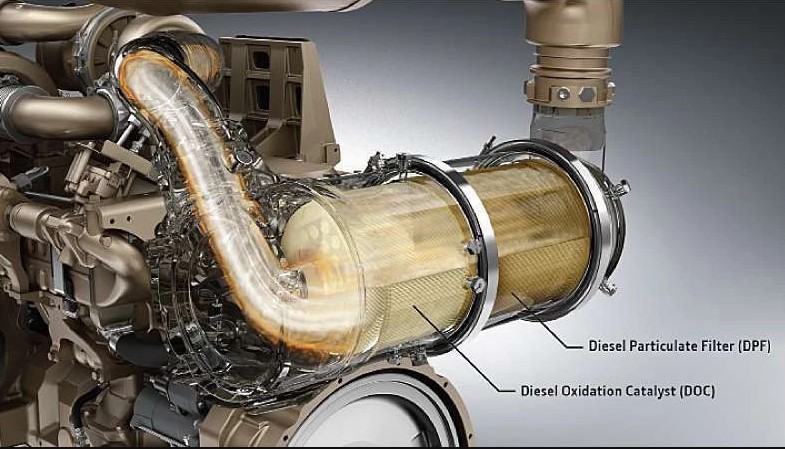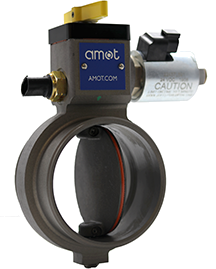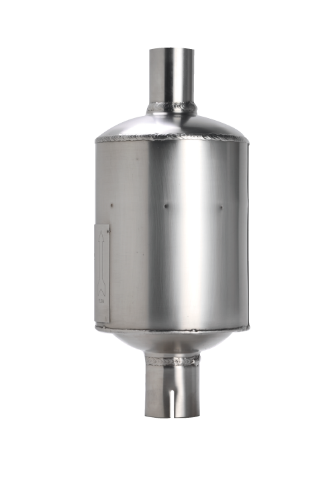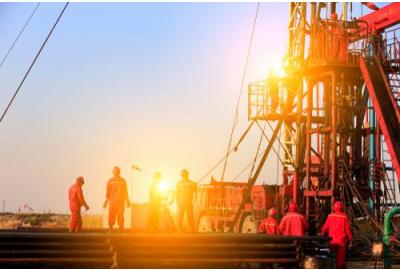Diesel engines that are not properly controlled or protected can become a dangerous source of ignition when used in areas where combustible vapors might be present such as refineries and petrochemical plants. In previous blog articles, we’ve explained the condition known as diesel engine runaway, the devastation it can cause, and how to prevent it by installing safety devices called air intake shut off valves (AISOV).
As nations adopt stricter emission standards—the most recent being the European Union’s Stage V legislation—and engine OEMs design new models to comply with these standards, you may be wondering if Stage V/Tier IV engines can still be fitted with the essential safety devices that allow them to operate on a site where a hydrocarbon release could trigger a runaway.
What is a Stage V/Tier IV engine?

Emission standards for off-highway diesel engines must meet increasingly strict limits set by the EPA and the EU to reduce particulate matter and nitrogen oxides. Engines that are compliant with the latest legislation – Stage 5 in EU countries or Tier 4 in the United States – are equipped with sophisticated exhaust after-treatment components and electronic controls dedicated to reducing emissions. There are a number of technologies an engine manufacturer can use to meet these requirements, but generally, a Stage 5/Tier IV engine must have an exhaust after-treatment system that is based on SCR (selective satalytic reduction) technology, EGR (exhaust gas recirculation), DOC (diesel oxidation catalysts), and a DPF (diesel particulate filter).
How to Operate your Stage V/Tier IV Diesel Engines Safely
When it comes to working in hazardous areas, equipment and plant manufacturers are committed to meeting the “site safe” requirements specified by their customers. Some countries have taken it a step farther and enacted requirements for air intake shut off valves and other safety devices on diesel engines operating in hazardous areas. The following are a few things to keep in mind when choosing safety devices for Stage V/Tier IV engines.
Air Shut Off Valves (AISOV)

Air shut off valves can quickly close the air intake flow path to prevent potentially explosive gases being sucked into the engine causing an overspeed condition. When specifying a valve for Stage V/Tier IV engines you must ensure that the valve you install will not interfere with the systems put in place to meet emission standards. Any restriction to the engine’s intake air flow is reported by the Mass Air Flow sensor, producing a fault code from the ECU and the ‘check engine’ light will illuminate. The appropriate valve for a Stage V/Tier IV engine should minimize the pressure drop through the intake pipework to ensure the level of safety is maintained, without affecting the engines performance or emissions. AMOT butterfly valves provide a very low air flow restriction and can be installed without compromising the exhaust emissions.

Spark Arrestors
A spark arrestor is a device installed on the engine’s exhaust to prevent the escape of sparks which could become an ignition source. Selecting the right spark arrestor for your exhaust system is essential and there is still a lot of uncertainty as to whether the DPF will function as an effective and safe substitute.
Independent tests commissioned by several major OEMs and carried out by notified bodies, on the DPF, certify that these units will function as a spark arrestor and comply with the EN 1834 standards.
Without this test certificate, a site will request the installation of a spark arrestor on an emission compliant engine, but consideration must be given to the flow characteristics and engine data in order to select the correct model.
The addition of a spark arrestor to exhaust pipework that already includes the after-treatment systems can add additional restriction to the gas flow, exceeding the engine’s back pressure limits. The total back pressure for the exhaust system, including the spark arrestor, must be within the limits set by the manufacturer.
How we can help you?
Selecting the right safety device can be confusing, and an incorrect choice can lead to devastating consequences. Why not contact one of our technical advisors to discuss your application, and we can help you select the best solution?










